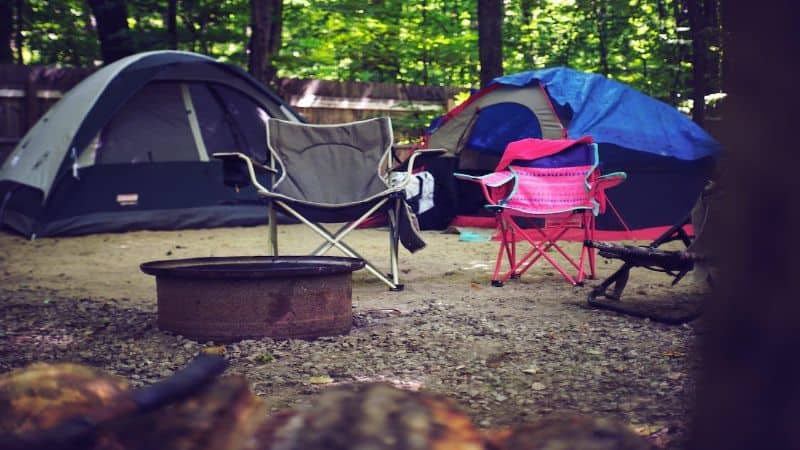When it comes to camping gear, choosing the right sleeping bag can make or break your outdoor experience. With so many options out there, it’s easy to feel overwhelmed. I’ve often found myself torn between down and synthetic sleeping bags, each boasting unique benefits that cater to different needs.
Down bags are known for their incredible warmth-to-weight ratio and packability, while synthetic bags offer durability and moisture resistance. Understanding the pros and cons of each can help you make an informed decision that suits your adventures. Join me as I dive into the world of sleeping bags, comparing down and synthetic options to find out which one reigns supreme for your next trip under the stars.
Overview of Sleeping Bags
Sleeping bags serve as essential gear for camping trips, protecting against the elements while providing comfort during rest. They come in two main types: down and synthetic. Each type offers unique benefits that cater to different camping needs.
Down Sleeping Bags
Down sleeping bags fill with natural insulation from duck or goose feathers. They excel in warmth-to-weight ratio, making them lightweight and easy to pack for trekking and long hikes. A down bag compresses significantly, fitting snugly into a backpack. However, they require careful handling, as moisture can reduce their insulating properties. For dry, cold conditions, down options shine, offering superior warmth and comfort.
Synthetic Sleeping Bags
Synthetic sleeping bags utilize man-made insulation materials that resist moisture better than down. The warmth of synthetic bags persists even when wet, making them suitable for unpredictable weather. They tend to be more affordable and durable, which is beneficial for frequent hikers and campers. While heavier than down bags, synthetic options still provide adequate warmth for various outdoor adventures.
Choosing the Right Sleeping Bag
When deciding between down and synthetic, consider factors like climate, weight, and personal preferences. Down is ideal for cold, dry environments, while synthetic excels in damp and variable conditions. Ultimately, it’s about finding what fits your camping style and environmental needs best.
Down Sleeping Bags
Down sleeping bags are a fantastic choice for campers who prioritize warmth and weight. Filled with duck or goose feathers, these bags offer a unique balance of comfort and performance, making them a popular option for chilly outdoor adventures.
Benefits of Down
- Lightweight: Down bags weigh less than most synthetic bags, making them easy to carry on long hikes.
- Compressibility: These bags pack down small, fitting neatly in my backpack without taking up too much space.
- Outstanding Insulation: Down provides excellent warmth-to-weight ratio, keeping me cozy in freezing temperatures.
- Breathability: Down allows moisture to escape, ensuring I stay dry and comfortable during humid nights.
- Durability: High-quality down bags can last for years, as long as they’re cared for properly. I’ve found that premium down retains its loft after multiple uses.
Drawbacks of Down
- Cost: Down bags tend to be more expensive than their synthetic counterparts, which can be a consideration for budget-conscious campers.
- Moisture Sensitivity: If wet, down loses its insulating properties, so I need to be cautious in wet conditions.
- Maintenance: Down requires more careful cleaning and storage to maintain its performance and longevity.
- Limited Wet Performance: In high-humidity environments, synthetic options may perform better, so I consider the climate before choosing a down bag.
Choosing the right sleeping bag involves weighing these benefits and drawbacks based on your camping needs and environment. For dry, cold excursions, down sleeping bags offer warmth and comfort that can’t be matched.
Synthetic Sleeping Bags
Synthetic sleeping bags offer a reliable option for campers looking for durability and performance, especially in wet conditions. They excel in affordability and provide a solid alternative to down bags.
Benefits of Synthetic
- Moisture Resistance: Synthetic materials resist moisture, keeping insulation effective even when wet. I appreciate this feature during unexpected rain, ensuring I stay warm.
- Affordability: Synthetic bags typically cost less than down alternatives, allowing more flexibility in my camping budget. I can invest this savings into other gear.
- Durability: These bags are tough and often withstand rough handling, which suits my outdoor adventures. I’ve had my synthetic bag survive numerous trips without significant wear.
- Easy Care: Synthetic bags are machine washable, making them convenient to clean after muddy excursions. I prefer not to spend much time on maintenance when I can focus on my next adventure.
- Versatility: Many synthetic bags perform well in various climates, from mild to harsh temperatures. I often take mine on summer hikes and winter camping trips alike.
Drawbacks of Synthetic
- Weight: Synthetic sleeping bags can be heavier and bulkier compared to down options. For long hikes, this added weight can become noticeable.
- Insulation Efficiency: While they provide warmth, synthetic materials may not offer the same warmth-to-weight ratio as down. I find that colder nights require me to bundle up a bit more in my synthetic bag.
- Compressibility: Synthetic bags usually don’t pack down as small as down bags. Pack space is important to me, so this property can limit my gear selection for tight fits in my backpack.
- Lifespan: Synthetic insulation tends to lose its loft and effectiveness over time. I’ve noticed this in older bags, decreasing warmth on chilly nights.
- Environmental Impact: Most synthetic bags are made from petroleum-based products, raising concerns about their sustainability. As an outdoor enthusiast, I strive to minimize my ecological footprint.
Understanding these benefits and drawbacks allows me to make informed decisions based on my experiences and preferences in the wild.
Comparison of Down and Synthetic
Selecting the right sleeping bag is crucial for any camping trip. Both down and synthetic options present unique characteristics that affect performance and comfort.
Insulation Performance
Down sleeping bags excel in insulation performance. Their natural feathers trap heat effectively, providing remarkable warmth even in frigid temperatures. I often rely on down bags during camping trips in dry, cold conditions, where temperatures drop significantly. However, they lose insulation properties when wet, making moisture management essential. Synthetic bags, on the other hand, maintain warmth when damp, making them ideal for unpredictable weather. They don’t compress as well as down, but they offer reliable insulation across various conditions.
Weight and Packability
Weight and packability are key considerations for any trip. Down sleeping bags typically weigh less and pack down smaller than synthetic bags, which helps when I’m trying to minimize my backpack load on long hikes. The compressibility of down means more room for other gear. However, I find synthetic bags are easier to stuff in a pack without as much care. They’re bulkier but robust, ideal for car camping where weight isn’t a primary concern.
Cost Considerations
Cost plays a significant role when choosing between the two. Down sleeping bags generally come with a higher price tag due to the materials used and their exceptional performance. I’ve invested in several high-quality down bags that last for years. Synthetic bags offer a more budget-friendly option, making them accessible for casual campers or those new to outdoor activities. While they might not last as long as down options, the initial savings can be appealing, especially for those exploring various camping environments.
Conclusion
Choosing between down and synthetic sleeping bags really comes down to your personal needs and camping style. I’ve found that down bags shine in cold, dry conditions where weight and packability are key. They’re just so cozy to snuggle into after a long day outdoors.
On the other hand, synthetic bags are a solid choice if you’re facing unpredictable weather or just want something easy to care for. They might not be as lightweight but they hold their own in damp situations.
Ultimately it’s all about balancing warmth, weight, and budget to find the perfect sleeping bag for your adventures. Happy camping!











